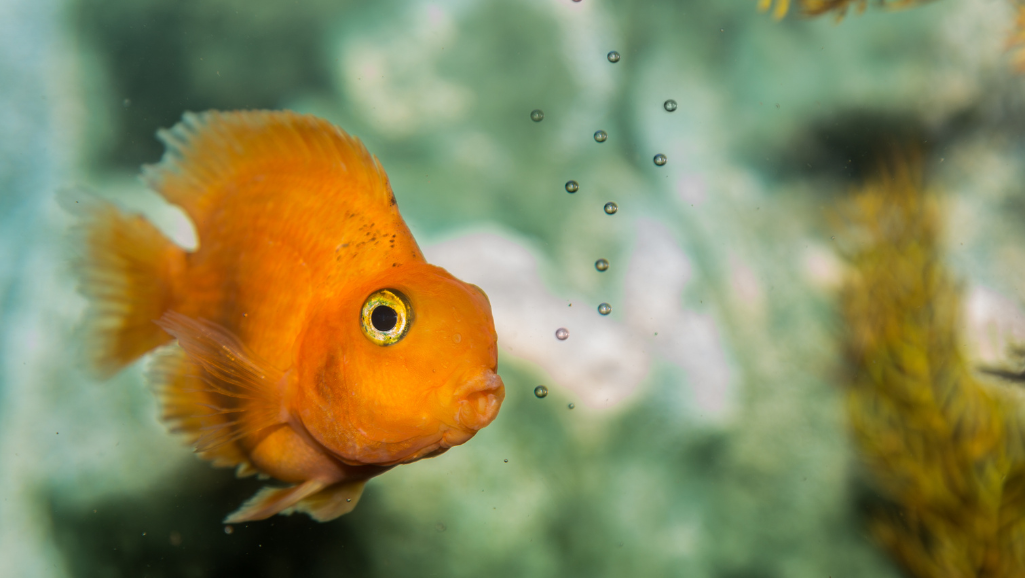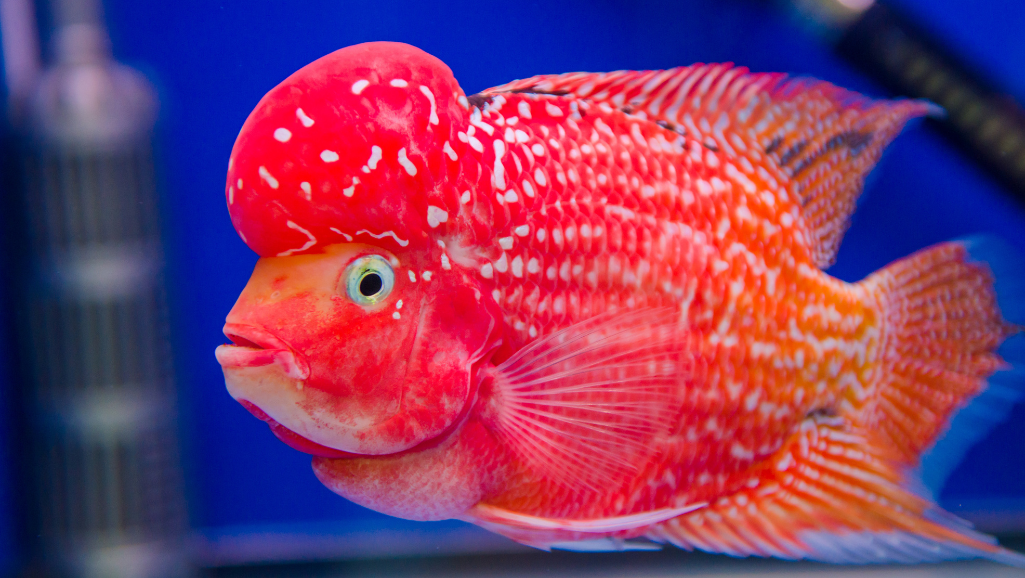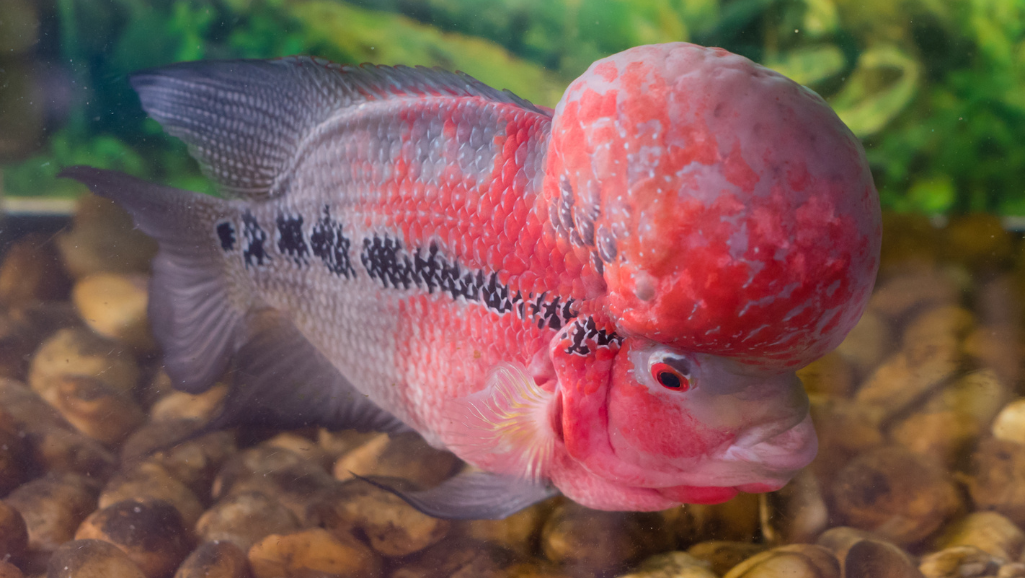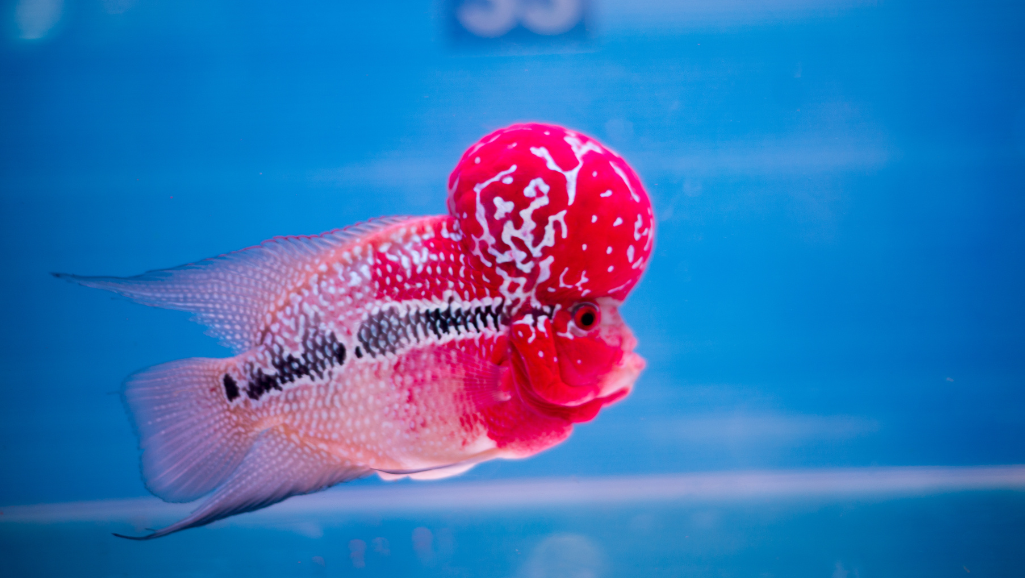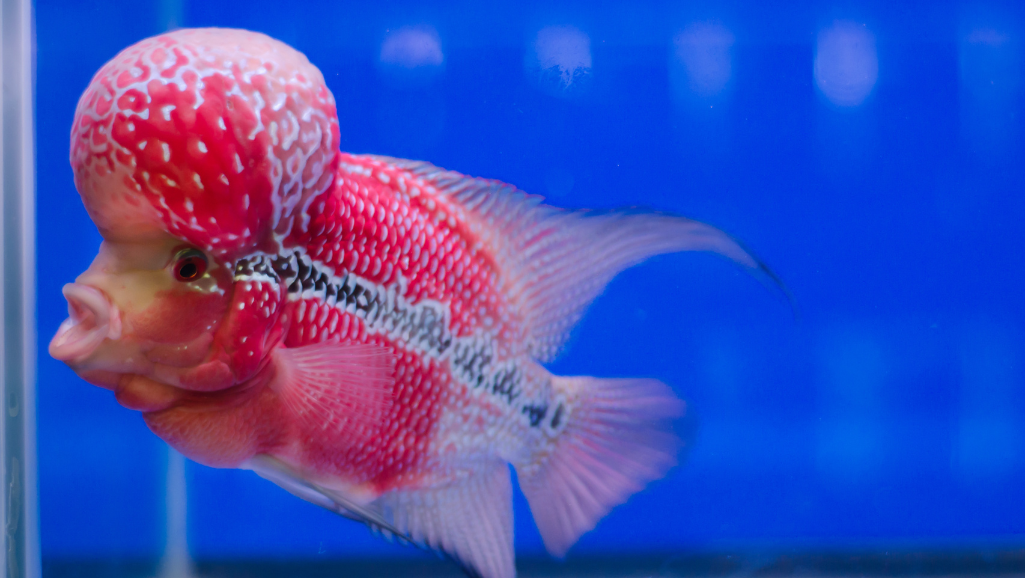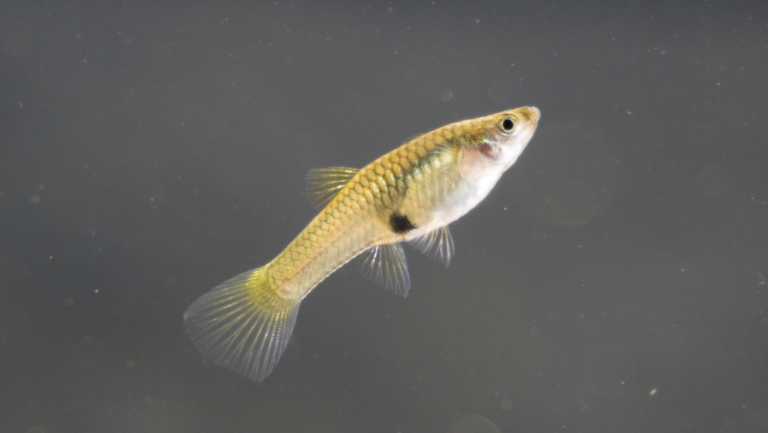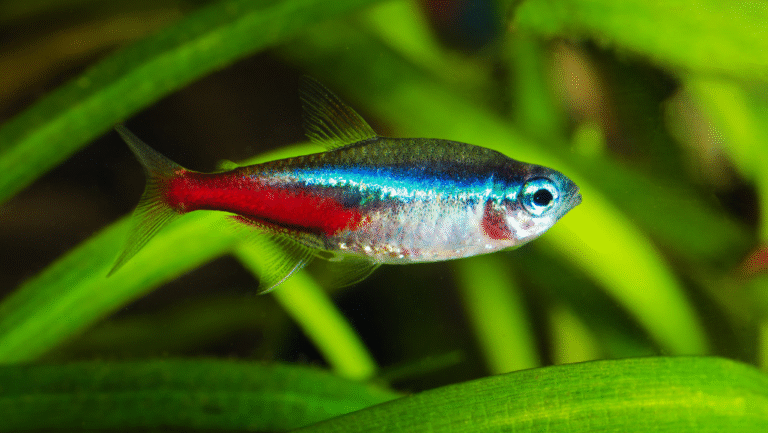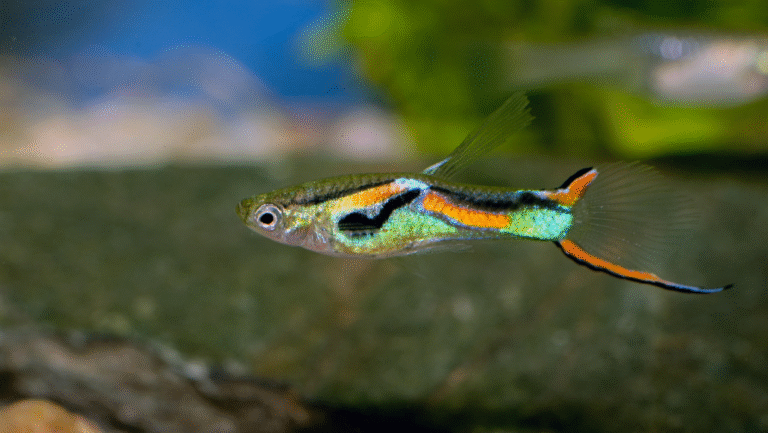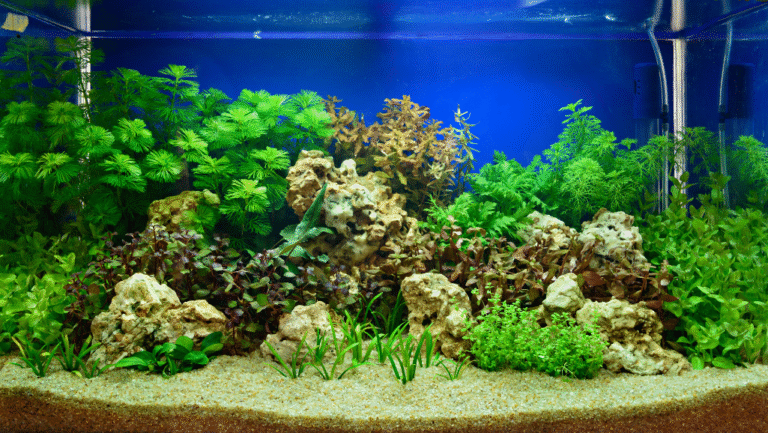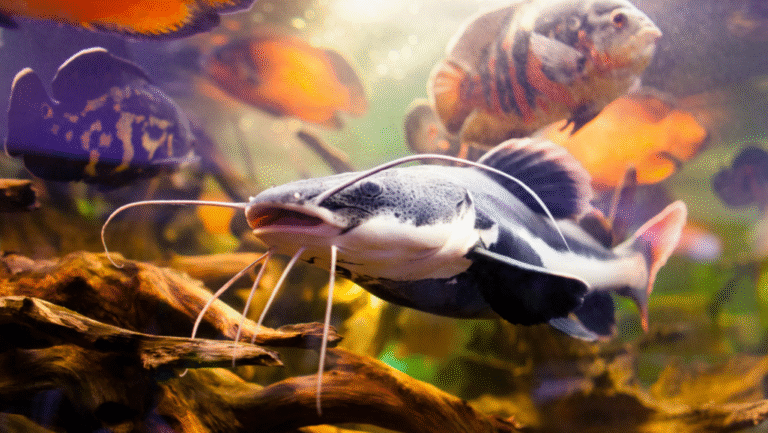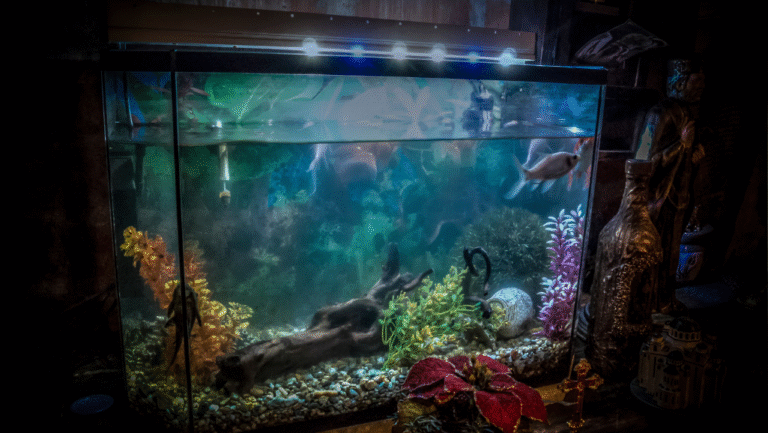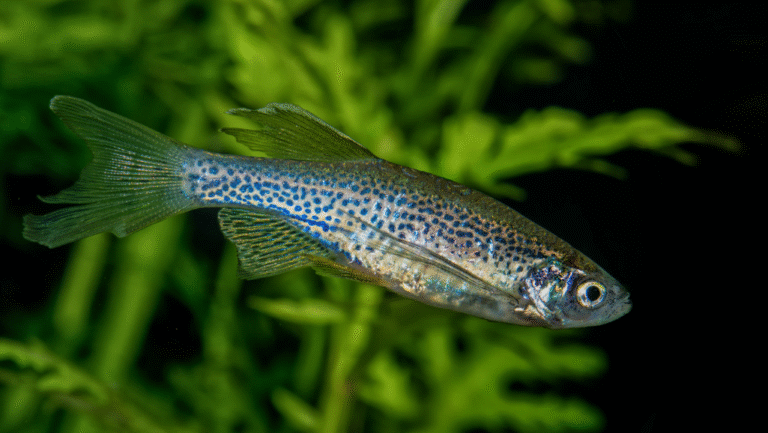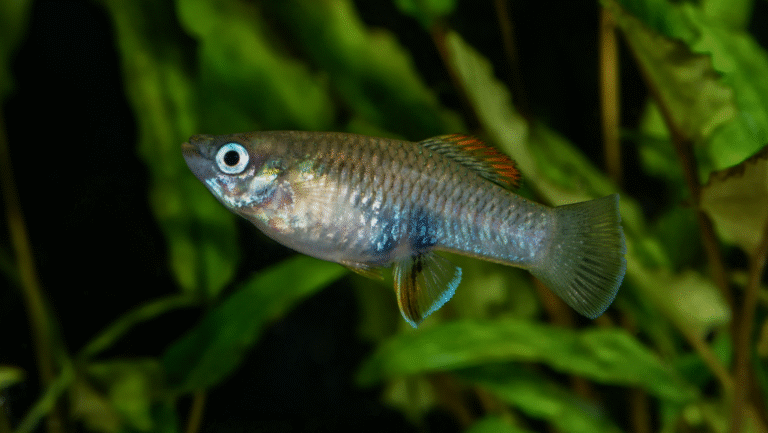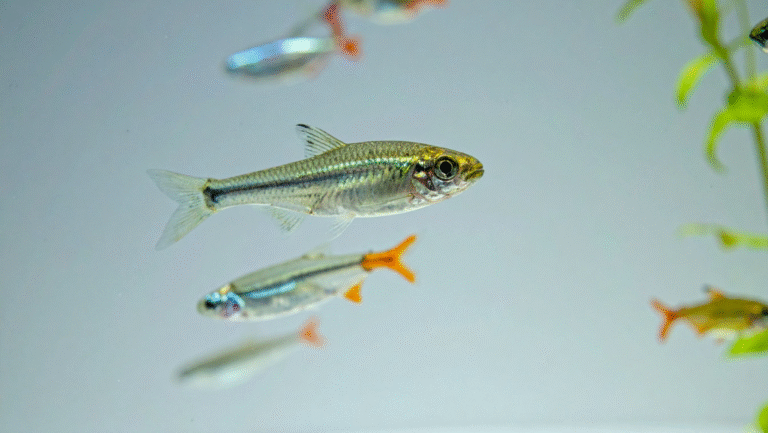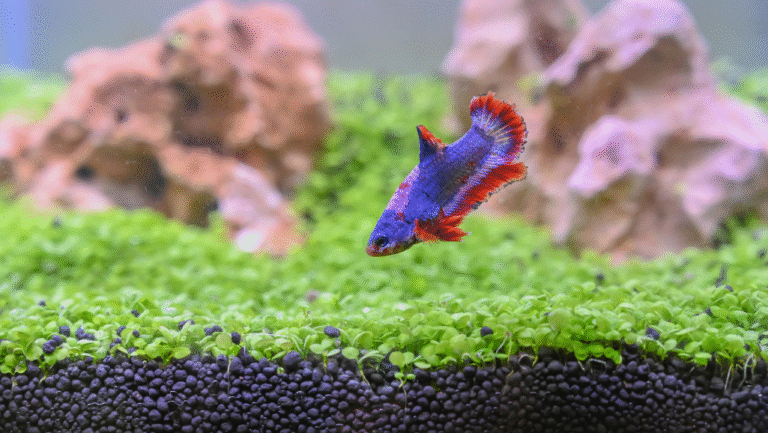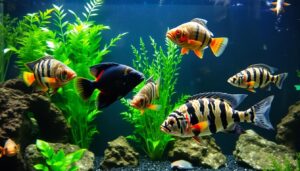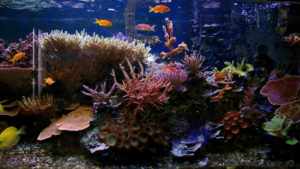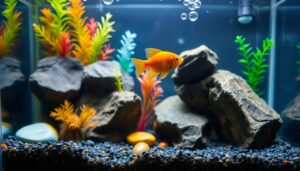The Red Devil Cichlid is a bold, attention-commanding freshwater fish that can become the vibrant centerpiece of a home aquarium.
Known scientifically as Amphilophus labiatus and also known in hobby circles as Cichlasoma labiatum, this species hails from Central American lakes such as Nicaragua, Managua, and Xiloá.
Adults reach 12–16 inches, sometimes up to 18, and live about 10–12 years with reports to 15 under excellent care. Their bright red to orange hues and powerful silhouette give them a striking appearance.
Care requires commitment: a single adult does best in a 75+ gallon tank with water at 75–82°F, pH 7.0–8.0, solid filtration, and secure decor to handle their spirited behavior and tendency to uproot plants.
This guide will inspire you with practical tips on tank setup, water quality, diet, and compatible mates. For common pitfalls to avoid, see this helpful resource on care mistakes: common care mistakes.
Key Takeaways
- This species is a striking, interactive aquarium fish that needs space and strong filtration.
- Expect vivid coloration and assertive behavior; plan for secure decor and open swim lanes.
- Maintain 75–82°F and pH 7.0–8.0 for long-term health.
- Provide a varied diet and monitor water quality often.
- Success comes from thoughtful setup and consistent, attentive care.
A striking freshwater fish with attitude: overview, allure, and what to expect
If you want a fish that demands attention, the red devil cichlid delivers with color and character. This species is large, charismatic, and known for its bright red or orange hues and confident presence in the aquarium.
Expect plenty of personality: these fish grow to substantial size—adults average around 15 inches—and show pronounced territorial behavior as they mature. Males often become the most imposing, which affects tank layout and companion choices.
Originating from wild lakes in Nicaragua, Managua, and Xiloá, their vigor and drive to defend territory shape how you set up space. Plan for a sturdy tank with secure decor and strong filtration to handle digging and active movement.
Diet matters. A varied food plan supports vivid color and energy. Stable water, regular maintenance, and a high-quality diet help the fish look and behave at its best.
Compatibility is realistic—devil cichlids are assertive. Many owners keep them solo or pair them in very large tanks with carefully chosen tank mates. With planning and diligence, this species rewards owners with bold displays and interactive moments.
- Size and space matter for long-term success.
- Design your aquarium to respect territorial instincts.
- Strong filtration and a nutritious diet keep color and health strong.
Identification and appearance: species, size, and coloration that turn heads
This species presents a muscular, elongated silhouette that instantly signals strength and presence in any aquarium. Its robust, laterally compressed body and long, pointed dorsal and anal fins suggest power and speed.
Scientific names and classification
Amphilophus labiatus, also known in older references as Cichlasoma labiatum, helps hobbyists match names across books and stores. Clear taxonomy prevents misidentification when buying or researching the species.
Size and build
Adults commonly reach 12–16 inches, with rare specimens up to 18 inches. The body is elongated, with a forked tail and sweeping fins that project dominance and athleticism.
Color and markings
Coloration varies from vivid red and orange to white and yellow morphs, often with black-tipped fins for contrast. Wild individuals may show brown or gray tones that aid camouflage.
Males vs. females
Males tend to grow slightly larger and often develop a nuchal hump. They show more assertive behavior, while females are usually smaller and less pronounced in profile.
- Recognize the species: multiple names in trade and literature.
- Plan for size: expect 12–16 inches when setting up a tank.
- Watch coloration: captive colors can be brighter than wild tones.
Red Devil Cichlid habitat & tank setup: creating a thriving environment
Space, structure, and strong equipment form the backbone of a thriving aquarium for aggressive fish. Start with a roomy tank to give adults room to cruise and to reduce stress during territorial surges.
Tank size and layout
Use at least a 75-gallon tank for a single adult; larger volumes help lower aggression. Keep the center open for fast swimming and place territories along the edges.
Decor and hiding places
Choose fine sand to support digging and cut abrasion. Build defined territories with stacked rocks and driftwood, and anchor structures so they won’t topple.
Equipment and water movement
Install robust filtration and add airstones to boost oxygenation. Protect heaters, intakes, and cables behind guards or in a sump to prevent damage by curious or aggressive fish.
Water conditions at a glance
- Temperature: 75–82°F
- pH: 7.0–8.0; moderately hard to hard water
- Maintain stable water quality with strong, redundant filtration
Practical tip: Avoid delicate plants; use hardy or artificial greenery and large-scale decor so the environment stays functional and attractive.
Diet and feeding: pellets, bloodworms, and nutritious variety for vivid coloration
A thoughtful diet boosts color and health while keeping tank water clear and stable. Give daily staples that cover core nutrition and add variety to keep fish lively and colorful.
Staple foods: Use high-quality cichlid pellets or flakes as the foundation. Pellets supply balanced vitamins, protein, and minerals for long-term health and steady growth.
Supplemental items: Rotate frozen or live options like bloodworms, brine shrimp, and earthworms. Add plant-based foods such as spirulina or blanched zucchini to support digestion and color.
Feeding strategy: Feed once or twice daily. Offer only what is eaten in a few minutes to prevent fouling and maintain clear water. Target feed if other fish compete aggressively to ensure fair portions.
“Variety in the bowl equals vibrancy in the tank.”
- Build meals around pellets for consistent nutrition.
- Add bloodworms and brine shrimp for protein and interest.
- Include veggies and rotate foods across the week.
Smart feeding improves color, calms behavior, and supports lasting health for your red devil. Keep portions measured and your tank cleaner for better outcomes.
Behavior and compatibility: managing aggression and choosing tank mates
Managing assertive behavior starts with tank design and careful choice of companions. These fish stake territory and respond strongly to sightlines, space, and resource access. A smart environment reduces conflict and helps you enjoy their personality.
Territorial dynamics and space
Territory size matters. Larger territories and clear sightline breaks cut down chasing. Cramped tanks magnify aggression and stress the animals.
Stable water and a well-planned layout soften aggressive peaks. Create multiple rock-built zones so each fish can claim a corner.
Choosing and managing tank mates
Only large, durable companions work well. Consider similarly robust fish in very large tanks and be ready to separate if dynamics shift.
- Keep plenty of hiding places and visual barriers to reduce escalation.
- Monitor during rearrangements and feeding—tensions spike then.
- Have a contingency plan: rehome or use a divider if needed.
For many aquarists, keeping a single specimen is the kindest, most rewarding choice.
Health, water quality, and breeding: from prevention to raising fry
A strong routine and clean water are the foundations of long-lived, vibrant fish. Good health ties directly to daily husbandry and steady water quality, not luck.
Common issues include ich, fin rot, and hole-in-the-head—ailments that often follow poor water or unstable conditions. Watch for clamped fins, flashing, loss of appetite, or pits on the head as early warning signs.
Maintenance routine
Keep filtration robust and perform 25–30% water changes weekly. Remove debris, clean media as recommended, and test parameters often.
- Target 75–82°F and pH 7.0–8.0 with moderate to hard hardness.
- Stable water prevents immune suppression and reduces opportunistic infections.
- Clean filters and clear detritus to keep conditions steady.
Breeding in captivity
Pairs are typically monogamous and will guard eggs and fry. To trigger breeding, raise temperature gently to about 77°F and offer nutrient-dense foods such as bloodworms and quality pellets.
Provide flat rocks or sloped substrate for spawning. Females may lay 600–700 eggs; expect hatching in 3–4 days and free-swimming fry in 5–7 days. Parents often dig pits and fiercely protect young—be prepared to support or separate fry if aggression threatens survival.
“Prevention is the best care: steady systems, careful observation, and patient practice yield healthy adults and strong fry.”
- Link health to husbandry: consistent water quality and filtration are the front line.
- Spot stress early and act fast to keep your fish species resilient.
- Follow a simple breeding roadmap: pair formation, temperature cue, nutrient foods, and secure spawning sites.
Conclusion
For aquarists seeking personality and power, the red devil offers both—if you match its needs with thoughtful planning.
Red devil cichlids shine with bold color and a commanding appearance when given space, strong filtration, and steady parameters (75–82°F; pH 7.0–8.0).
Provide at least 75+ gallons for one adult, a varied diet to sustain vibrant hue, and disciplined feeding to keep water pristine. These steps are the core of reliable care for any freshwater aquarium.
Remember that devil cichlids are cichlids aggressive by nature. Many keep them solo or with very robust companions in very large tanks to protect all fish and reduce stress.
With attention to environment, size (expect 12–16 inches), and routine, a red devil cichlid can thrive in captivity for a decade or more. Plan your layout, assemble sturdy gear, and make care a craft—your fish will reward you with lasting presence and personality.
